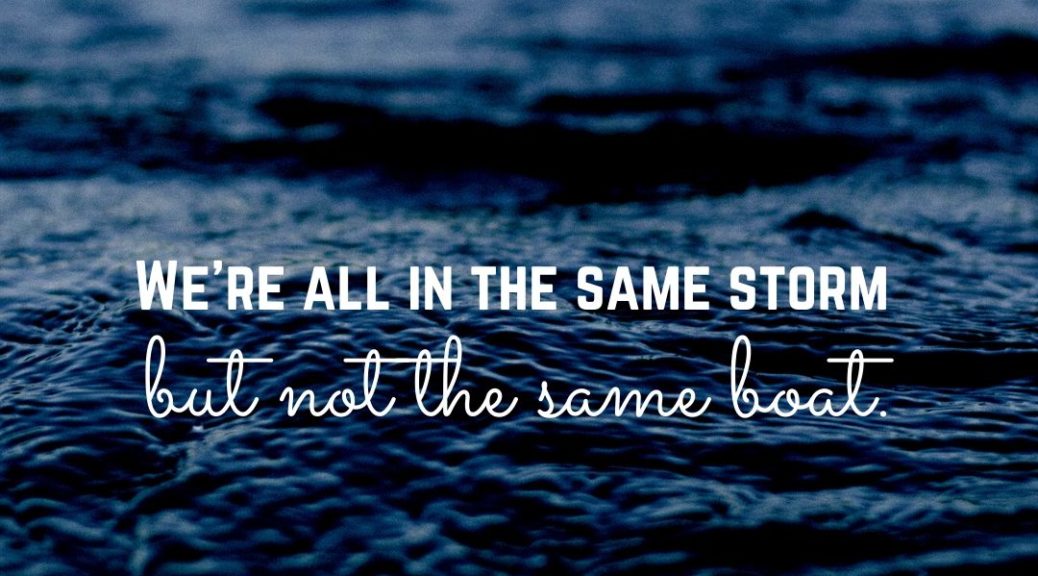Hello again faithful readers. I hope you are all doing well or at least the best you can do during these challenging times. No doubt, while we are all in this together and facing the challenge, the rest of the story differs from person to person.
The following is a Facebook post from an OLD high school classmate I saw on-line a few days ago that I wanted to share. Seems like a great message and a good reminder. While we may be going through these times together, what we may be dealing with is wide ranging and often the untold story we all need to be aware of and sensitive to.
I hope you find this helpful. Read on please.
WE ARE ALL IN THE SAME STORM
IOWA Covid-19 Breaking News
Posted April 23rd
“After listening to some pretty harsh comments & arguing over reopening or completely shutting down for another two weeks, someone in their right mind wrote this.
Don’t know who wrote it, but it’s spot on.
Perspective:
WE ARE NOT IN THE SAME BOAT …
I heard that we are all in the same boat, but it’s not like that. We are in the same storm, but not in the same boat. Your ship could be shipwrecked and mine might not be. Or vice versa.
For some, quarantine is optimal. A moment of reflection, of re-connection, easy in flip flops, with a cocktail or coffee. For others, this is a desperate financial & family crisis.
For some that live alone they’re facing endless loneliness. While for others it is peace, rest & time with their mother, father, sons & daughters.
With the $600 weekly increase in unemployment some are bringing in more money to their households than they were working. Others are working more hours for less money due to pay cuts or loss in sales.
Some families of 4 just received $3400 from the stimulus while other families of 4 saw $0.
Some were concerned about getting a certain candy for Easter while others were concerned if there would be enough bread, milk and eggs for the weekend.
Some want to go back to work because they don’t qualify for unemployment and are running out of money. Others want to kill those who break the quarantine.
Some are home spending 2-3 hours/day helping their child with online schooling while others are spending 2-3 hours/day to educate their children on top of a 10-12 hour workday.
Some have experienced the near death of the virus, some have already lost someone from it and some are not sure if their loved ones are going to make it. Others don’t believe this is a big deal.
Some have faith in God and expect miracles during this 2020. Others say the worst is yet to come.
So, friends, we are not in the same boat. We are going through a time when our perceptions and needs are completely different.
Each of us will emerge, in our own way, from this storm. It is very important to see beyond what is seen at first glance. Not just looking, actually seeing.
We are all on different ships during this storm experiencing a very different journey.
Realize that and be kind.”
-Unknown author
Things will get better and we will find our balance and our way. But…..remember your friend, co-worker, neighbor and anyone else you may encounter. Who knows what their personal experience might be.
Thank you for reading.
Dave



